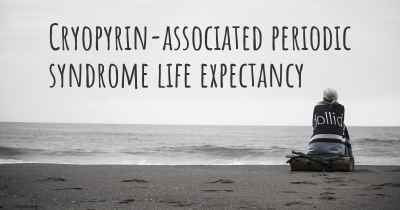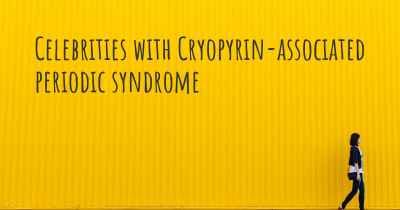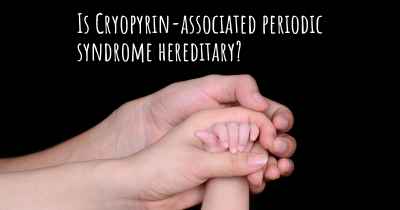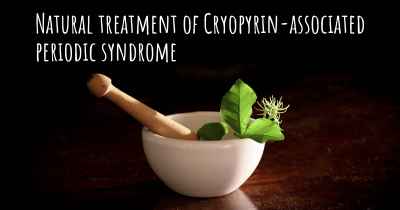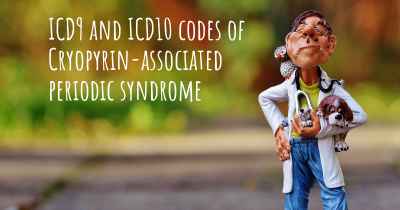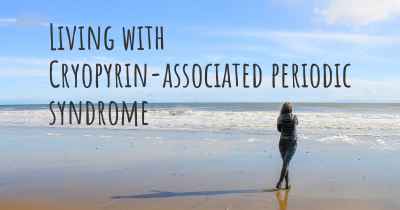What is the history of Cryopyrin-associated periodic syndrome?
When was Cryopyrin-associated periodic syndrome discovered? What is the story of this discovery? Was it coincidence or not?
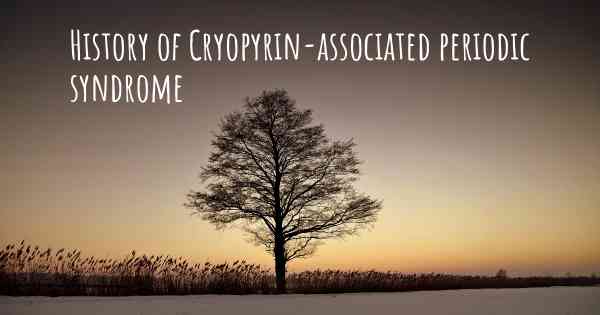
Cryopyrin-associated periodic syndrome (CAPS) is a rare autoinflammatory disorder that was first described in the late 1990s. It is characterized by recurrent episodes of inflammation that can affect various parts of the body, including the skin, joints, and organs. CAPS is caused by mutations in the NLRP3 gene, which encodes a protein called cryopyrin.
The discovery of CAPS:
The history of CAPS begins with the discovery of the NLRP3 gene mutation. In 1999, researchers identified a mutation in the NLRP3 gene in a family with a history of recurrent fevers and inflammation. This mutation was found to result in the overproduction of a protein called interleukin-1 beta (IL-1β), which is a key mediator of inflammation in the body.
Classification of CAPS:
Over time, researchers recognized that CAPS is actually a spectrum of three related disorders: familial cold autoinflammatory syndrome (FCAS), Muckle-Wells syndrome (MWS), and neonatal-onset multisystem inflammatory disease (NOMID), also known as chronic infantile neurologic cutaneous and articular syndrome (CINCA). These disorders differ in their severity and the age at which symptoms first appear.
Understanding the pathogenesis:
Further research into CAPS focused on understanding the underlying mechanisms of the disease. It was discovered that the NLRP3 gene mutation leads to the overactivation of the inflammasome, a complex of proteins involved in the immune response. This overactivation results in the excessive production of IL-1β, leading to the characteristic inflammation seen in CAPS.
Recognition and diagnosis:
As more cases of CAPS were reported, clinicians began to recognize the distinct clinical features of the syndrome. Patients with CAPS typically experience recurrent episodes of fever, rash, joint pain, and other systemic symptoms. The diagnosis of CAPS is based on clinical criteria, genetic testing for NLRP3 mutations, and laboratory findings such as elevated levels of inflammatory markers.
Treatment and management:
Early treatment of CAPS is crucial to prevent long-term complications. The mainstay of treatment is the use of IL-1β inhibitors, such as anakinra and canakinumab, which effectively block the inflammatory cascade. These medications have revolutionized the management of CAPS, providing significant relief from symptoms and improving the quality of life for patients.
Ongoing research and future prospects:
While IL-1β inhibitors have been highly successful in treating CAPS, researchers continue to explore new therapeutic approaches. This includes the development of novel drugs that target the inflammasome or other components of the immune system. Additionally, ongoing studies aim to better understand the long-term outcomes of CAPS and improve the overall care of affected individuals.
In conclusion, Cryopyrin-associated periodic syndrome (CAPS) is a rare autoinflammatory disorder caused by mutations in the NLRP3 gene. The discovery of this gene mutation and subsequent research into the pathogenesis of CAPS have greatly advanced our understanding of the disease. With the advent of IL-1β inhibitors, the treatment and management of CAPS have significantly improved. Ongoing research aims to further enhance our knowledge of CAPS and develop new therapeutic options for affected individuals.
